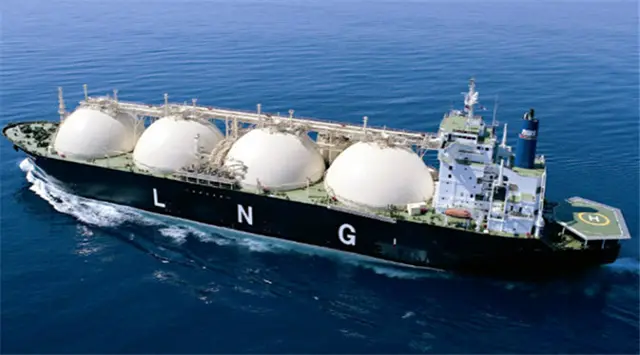More than 5,000 delegates from the Liquidified Natural Gas (LNG) sector around the world met here on Tuesday for a tri-annual conference to discuss the industry's future at a time when challenges loom large.
The conference, the largest of the industry for the year, has seen a who's who of the world's top oil and LNG players, including top executives from Chevron, Royal Dutch Shell, Woodside and others.
All seemed to admit that the LNG industry has been faced with grave challenges brought by "cheaper-than-expected oil" and "weaker-than-expected demand", as Helen Robertson, market editor of Petroleum Economist, put it.
This view is shared by global rating agency Standards & Poors, which estimated that LNG producers are very likely to face headwinds for the coming years.
Woodside Chief Executive Peter Coleman said after the opening ceremony that smaller, phased LNG developments will be pursued in the future.
Woodside recently announced the shelving of the 50 billion AU dollars (38 billion U.S. dollars) Browse floating LNG project off Western Australia, in which Shell is a major partner.
Australia has been ambitious to develop its LNG sector to make the country the world's biggest LNG exporter by 2020-21. With the current 10 LNG projects, the volume of Australia's LNG exports is expected to triple to 75 million tons by 2020-21, be worth around 42 billion AU dollars (32 billion U.S. dollars) in 2015-16 real terms, and supply around 40 percent of both Japan and China's LNG needs and 25 percent of South Korea's.
However, the mass investment in the LNG sector has been plagued by delays and blowouts and new production capacity is fulfilled at a time of low market price brought by plummeting price of oil.
Delegates are cautiously optimistic of the long-term future of the industry.
"Although the sector is currently facing challenges, it is important to remember that its fundamentals remain strong," said Australian Minister for Resources and Energy Josh Frydenberg in a statement.
"Over the next five years, an estimated 455 million people, equal to the current populations of the United States and Japan, will move from rural regions to cities helping to fuel increased energy demand."
"Further, India's electricity use per person is still lower than the African average. This will change through continued economic development. In fact, the International Energy Agency forecasts global gas demand to increase by around 50 percent between now and 2040," he said.
Western Australian Premier Colin Barnett said that the demand for LNG in the Asia Pacific over the past decade has more than double. Western Australian Department of State Development estimates that demand will increase from around 180 million tons in 2014 to 225 million tons in 2020 and to 245 million tons in 2025.
It is noted that gas accounts for only around 10 percent of electricity generation in the Asia Pacific region and only around 5 percent in China and less than 5 percent in India.
"The prospects for future growth through economic development and the policy decisions of governments is obvious," Barnett said.
"The industry may be cyclical and sometimes volatile, but the long term growth trend is undeniable," he said.
He also believed that apart from being a major exporter of LNG, Australia could do better domestically.
"For Australia, coal also dominates, accounting for 61 percent of power generation. Gas accounts for just 22 percent. Surely the easiest and least costly way to reduce greenhouse emissions is to require that most new and replacement power generation is based on gas."
Prime Minister Malcolm Turnbull said on Monday night at the LNG18 reception dinner that Australia will respond low LNG prices by innovating, being more efficient and increasing market share.
 简体中文
简体中文

